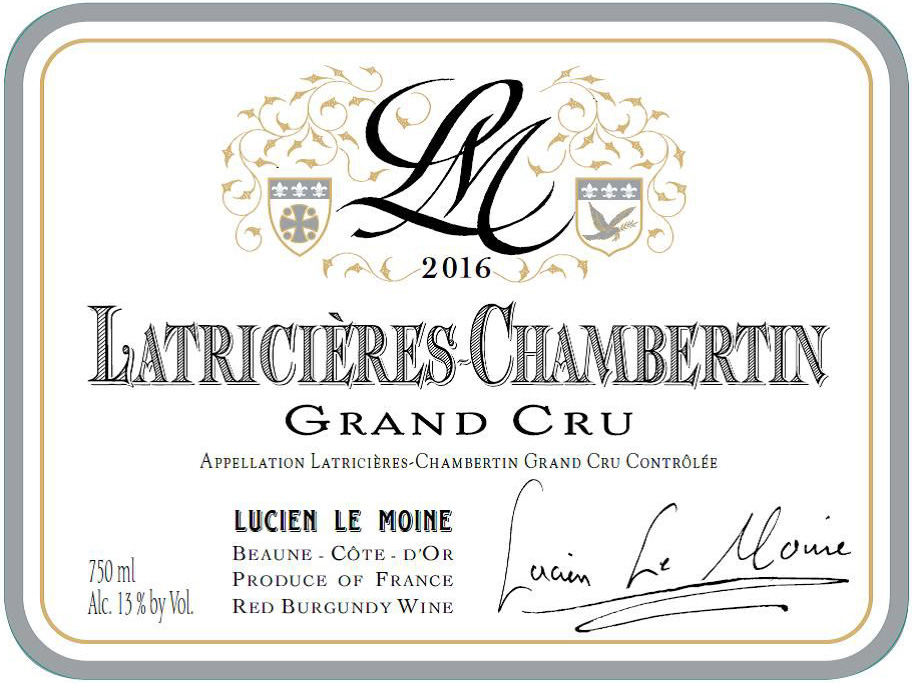
Lucien Le Moine
Latricières-Chambertin Grand Cru
Latricières-Chambertin Grand Cru
Latricières is often thought of as a “sturdy” Gevrey-Chambertin Grand Cru, Le Moine’s 2014 has an overtly elegant side that comes through, surprising and exceptionally promising.

Lucien Le Moine
Griotte-Chambertin Grand Cru
Griotte-Chambertin Grand Cru
Griotte-Chambertin is one of the most elusive Grand Crus in Burgundy; it’s the smallest Grand Cru in Gevrey at only 3 hectares in size. The vineyard faces north-east, which means the vines are not fully exposed to the morning sunshine - this contributes to the fresher, less masculine style of its wines.
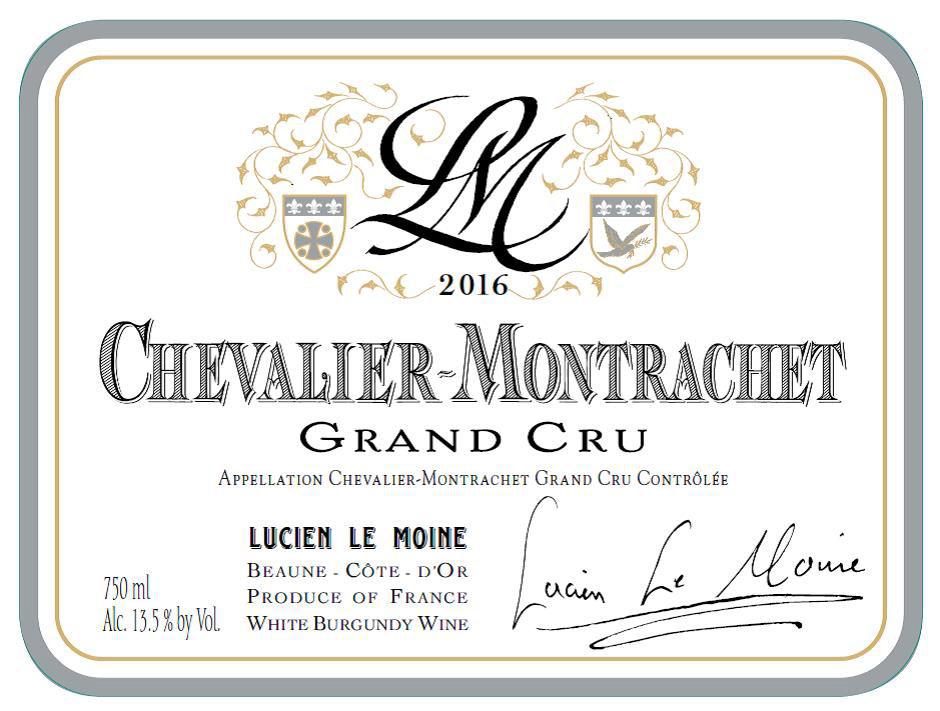
Lucien Le Moine
Chevalier-Montrachet Grand Cru
Chevalier-Montrachet Grand Cru
The gentleman, as Mounir calls Chevalier-Montrachet, a wine that always shows lovely definition and everything in place; classic grace.

Lucien Le Moine
Batard-Montrachet Grand Cru
Batard-Montrachet Grand Cru
Bâtard-Montrachet borders Montrachet on the west, and is typically a fatter, more open and more exotic wine than Chevalier-Montrachet, with less grip and a more flowery, honeyed richness.

Lucien Le Moine
Criots-Batard-Montrachet Grand Cru
Criots-Batard-Montrachet Grand Cru
The soils in Criots are a combination of marl, clay and chalk. In fact, the word “Criots” means chalk in French. The south-east facing slope lies at an altitude of around 780 feet - slighly lower than neighboring Chevalier-Montrachet and Le Montrachet, so the slopes tend to have a higher proportion of clay. Mounir describes this wine as “a bridge between the body of Bâtard and the class of Montrachet.

Lucien Le Moine
Corton-Charlemagne Grand Cru
Corton-Charlemagne Grand Cru
The commune of Aloxe-Corton, has the unusual distinction of having over half its area covered in grand cru vineyards. These occupy 298 acres divided among 19 climats which take the Corton grand cru appellation for red wines; five among these, totalling 120 acres, take the Corton-Charlemagne grand cru appellation for white wines as well as the Corton grand cru appellation for red wines.
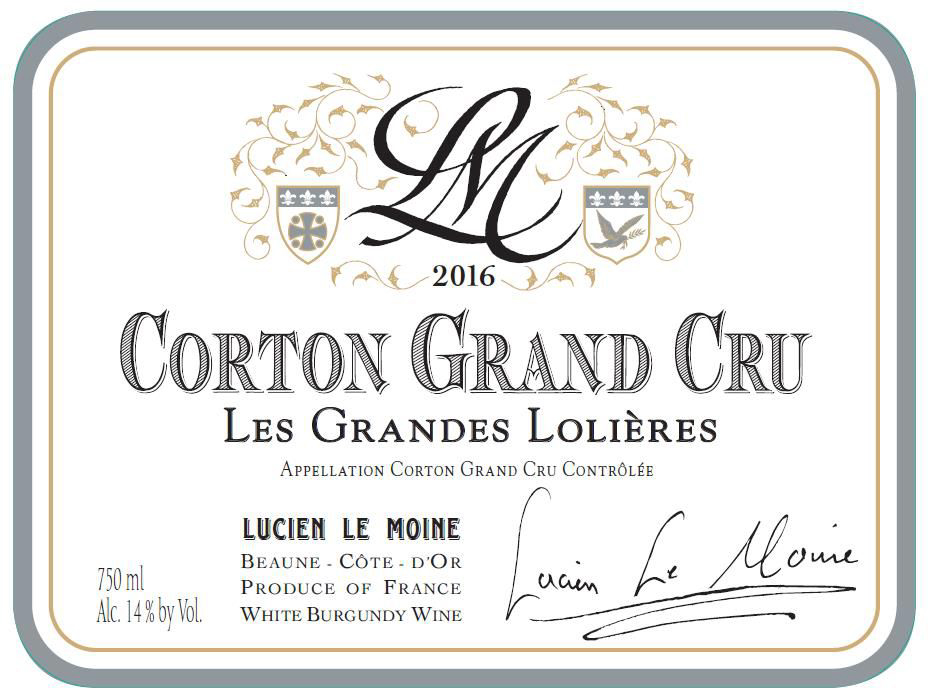
Lucien Le Moine
Corton Les Grandes Lolières Grand Cru
Corton Les Grandes Lolières Grand Cru
Sometimes this cru forms part of Lucien Le Moine’s Corton Blanc, other times it is bottled separately. A cru that is not often seen, and is a red cru above all. It has an exotic spicy side to the aromas and flavors, and a broad body that maintains its precision.
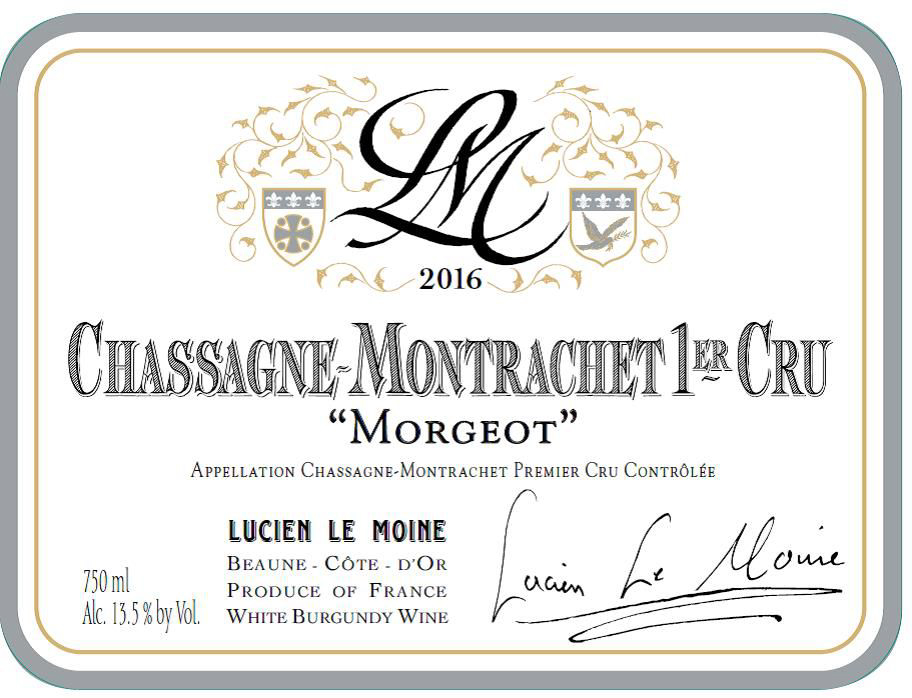
Lucien Le Moine
Chassagne-Montrachet 1er Cru “Morgeot”
Chassagne-Montrachet 1er Cru “Morgeot”
This vineyard lies on this Santenay end of the road that leads down from Chassagne to Santenay, widely considered the best area for white Chassagne. The wines here are racier and have more depth than most other white Chassagne.
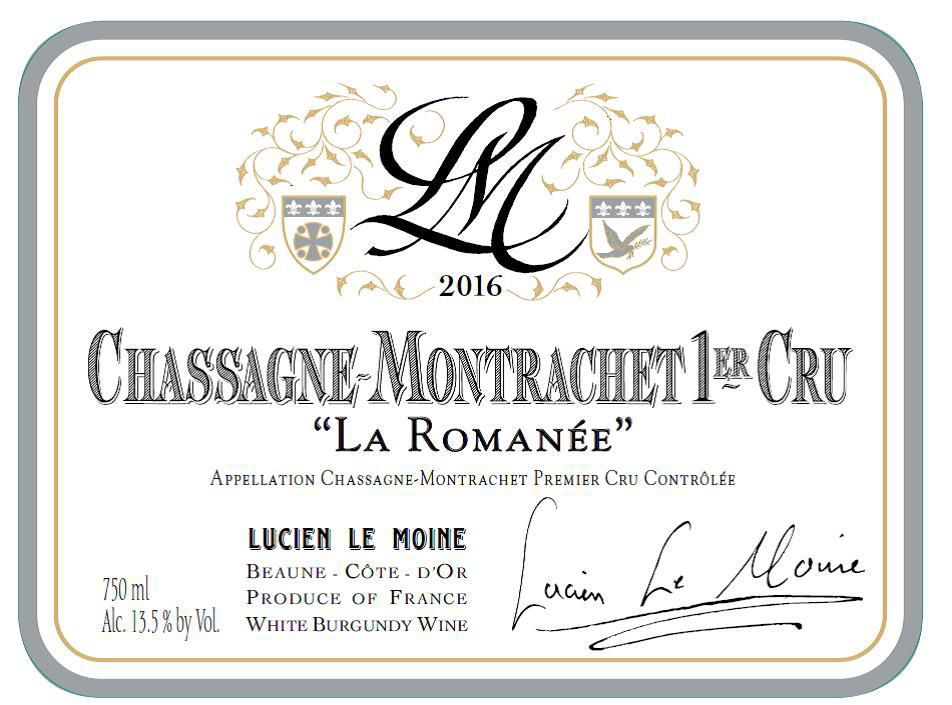
Lucien Le Moine
Chassagne-Montrachet 1er Cru “La Romanée”
Chassagne-Montrachet 1er Cru “La Romanée”
Mounir says that Chassagne-Montrachet “La Romanée” is, to make an analogy, the most “Puligny” wine from Chassagne. It has a lot of silkiness and sweetness, and low acidity compared to other Chassagnes; it is a very clean wine, with a particular crème brûlée character that gives way to sweet fruit.

Lucien Le Moine
Chassagne-Montrachet 1er Cru "Les Embrazées"
Chassagne-Montrachet 1er Cru Les Embrazées
This vineyard lies on this Santenay end of the road that leads down from Chassagne to Santenay, widely considered the best area for white Chassagne. The wines here are racier and have more depth than most other white Chassagne.
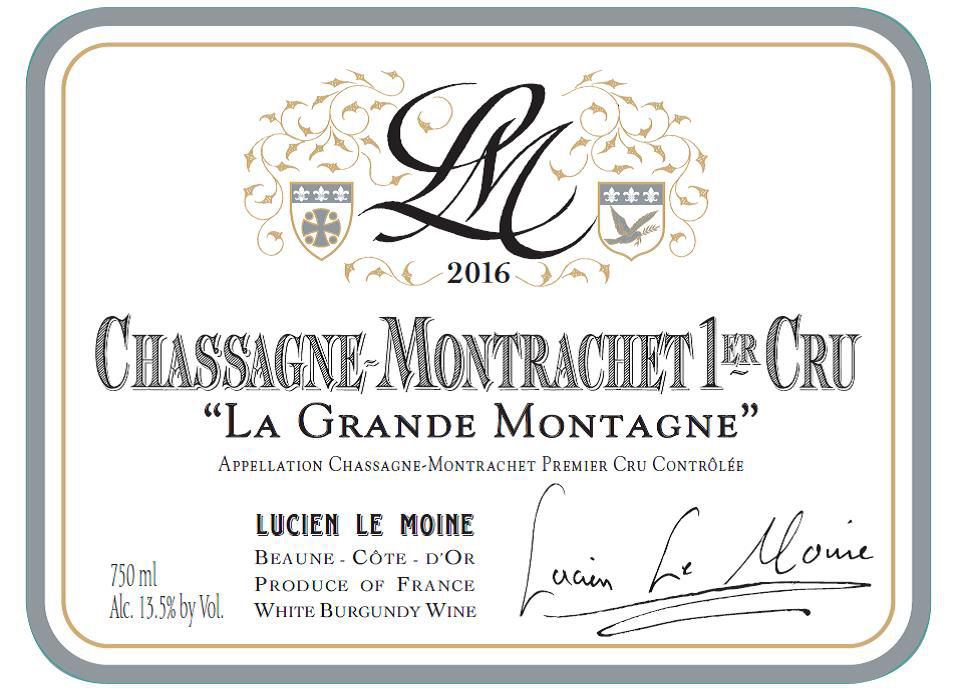
Lucien Le Moine
Chassagne-Montrachet 1er Cru “La Grande Montagne”
Chassagne-Montrachet 1er Cru “La Grande Montagne”
This tiny vineyard is located - as the name suggests - on the steep hillside of the same name just west of Chassagne-Montrachet. La Grande Montagne itself is the most southerly of the limestone hills which make up the Côte d’Or escarpment. It is located in the heart of the band of the best Chassagne 1er Crus at the top of the slope that includes Grandes Ruchottes, la Romanée and Caillerets.

Lucien Le Moine
Chassagne-Montrachet 1er Cru “Cailleret”
Chassagne-Montrachet 1er Cru “Cailleret”
Chassagne-Montrachet Caillerets is defined by minerality. It is a very classy wine, with lots of dustiness. It’s the wine in Chassagne that you can’t totally pin down with an easy description, and that’s why some consider it a Grand Cru level. Minerality is the main point – little white stones, lots of limestone.

Lucien Le Moine
Puligny-Montrachet 1er Cru “Les Folatières”
Puligny-Montrachet 1er Cru “Les Folatières”
The Folatières climat lies near the summit of this slope, above Clos de la Garenne roughly midway between Meursault and Montrachet. It is the largest of Puligny’s premiers crus and is always sweet, has a lot of ripeness, showing apricot and other similar flavors. After 18-20 months the minerality comes out in the wine.
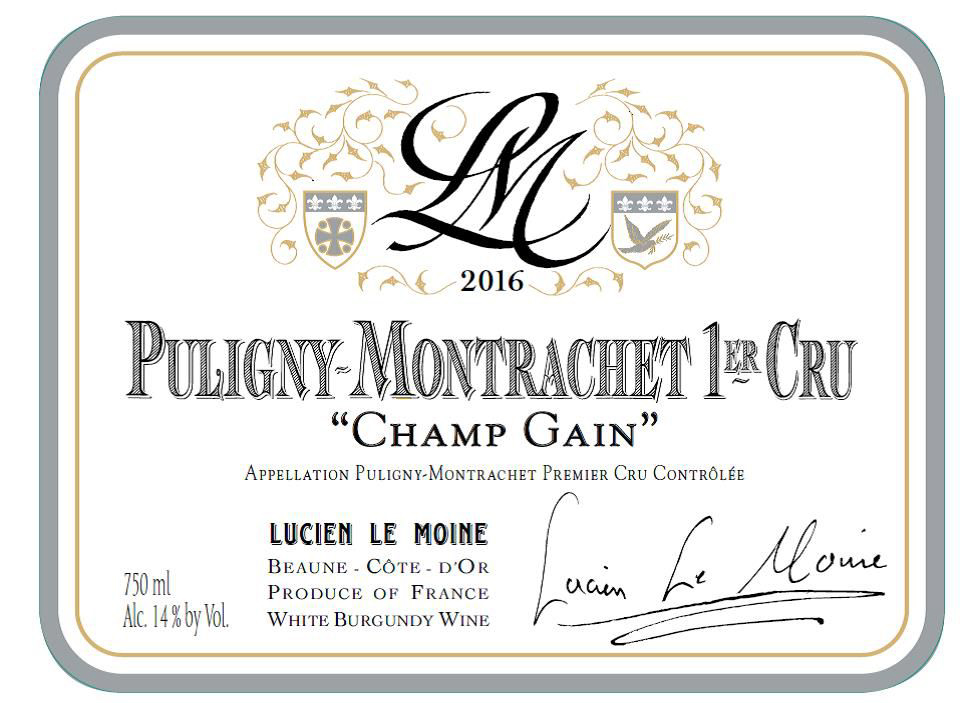
Lucien Le Moine
Puligny-Montrachet 1er Cru “Champ Gain”
Puligny-Montrachet 1er Cru “Champ Gain”
Champ Gains is high on the hill, and produces a wine in which a sense of dryness overshadows the sweet fruit - the sweetness that comes out is not an easy sweetness, and while you get apricot and other fruits on the palate, there is always a sense of dryness pulling them back.
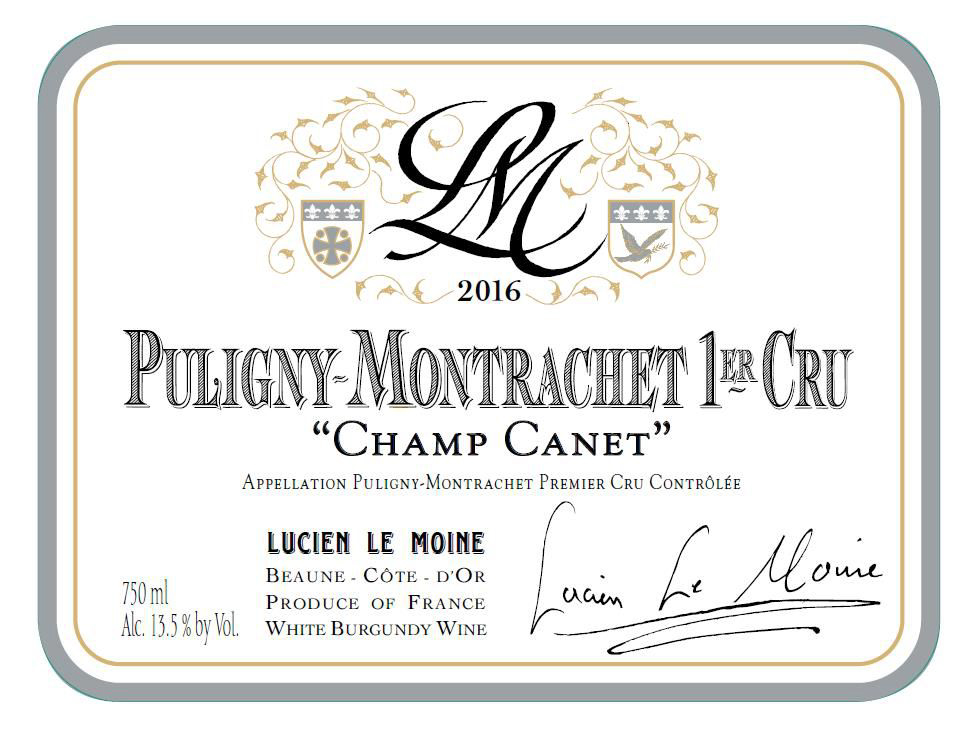
Lucien Le Moine
Puligny-Montrachet 1er “Champ Canet”
Puligny-Montrachet 1er “Champ Canet”
Mounir describes Champ Canet as a frustrated Puligny. It has a lot of vivacity, it is racy and salty, influenced strongly by Meursault. You can think of it almost as a Meursault Perrieres in Puligny.
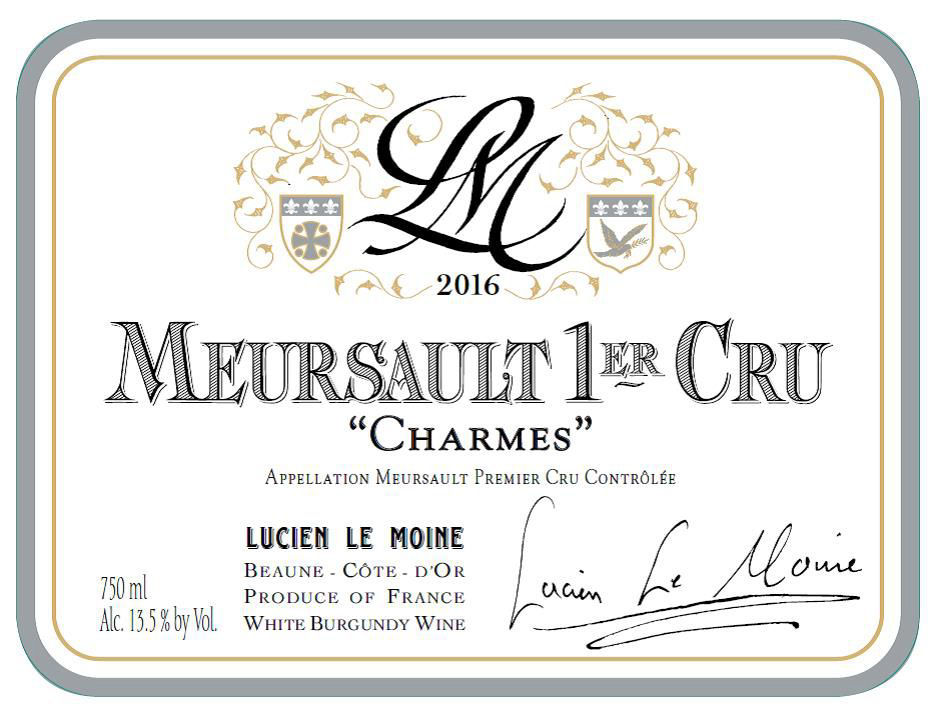
Lucien Le Moine
Meursault 1er Cru “Charmes”
Meursault 1er Cru “Charmes”
Charmes is larger than both Perrieres and Genevrières put together, extending all the way down to the Meursault-Puligny road. The upper part of the vineyard produces extremely compelling Meursaults, with a soft flowery character that is less racy than Perrieres and less spicy than Genevrières, but just as intense.
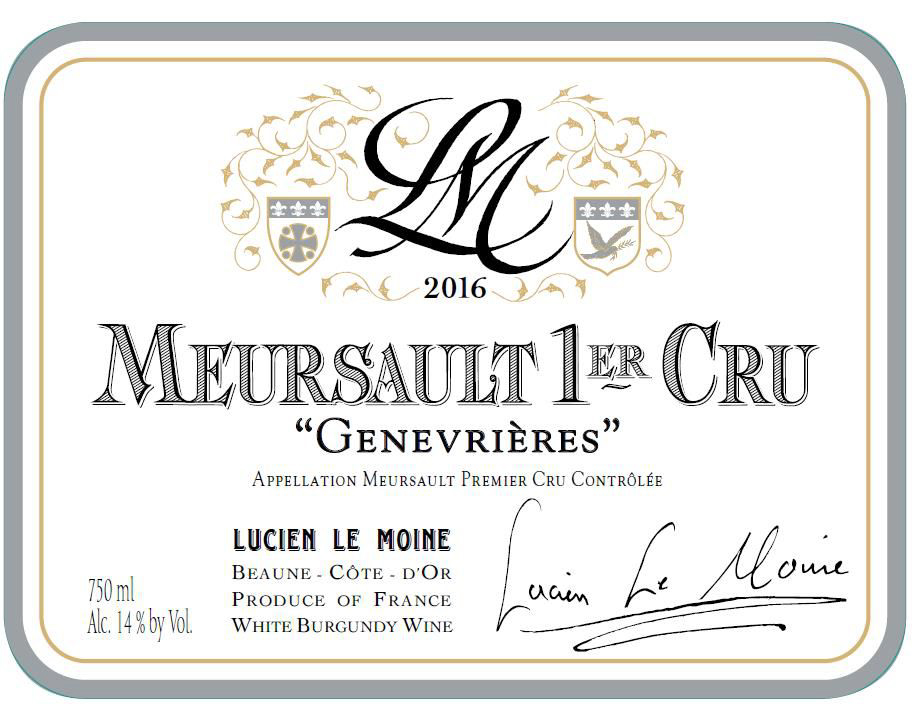
Lucien Le Moine
Meursault 1er Cru “Genevrières”
Meursault 1er Cru “Genevrières”
Genevrières is defined by viscosity. The vineyard is mid-slope, and in the Lucien Le Moine Genevrières there is always notable acidity (even in low-acid years) and alcohol. “Mr Too Much of Everything” is how Mounir likes to describe this wine. It ferments slowly, and for some reason it always has a touch of cloudiness – something never precipitates out. It’s a wild child.
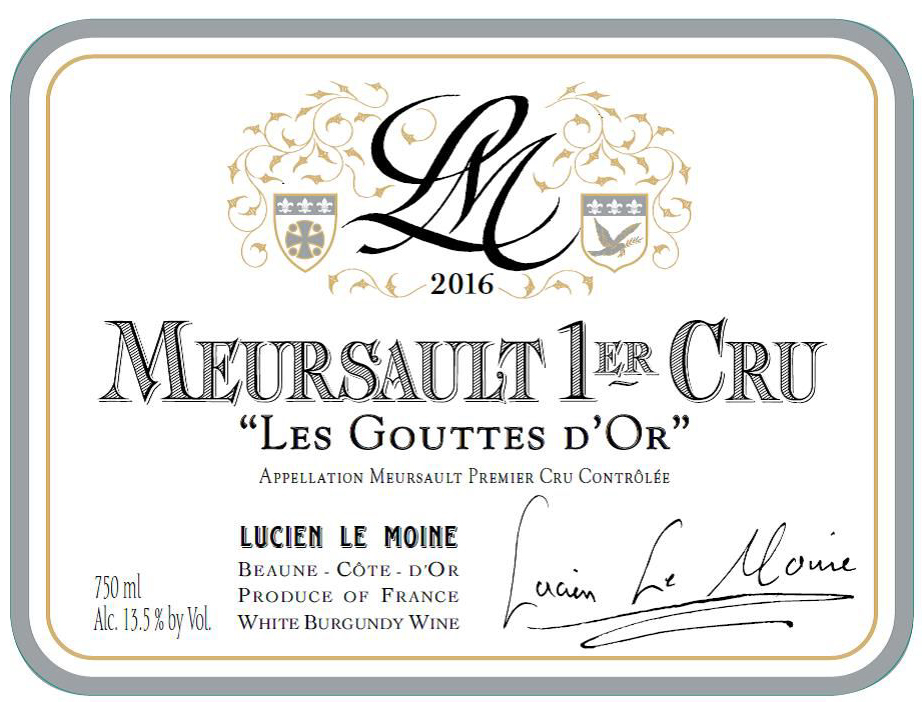
Lucien Le Moine
Meursault 1er Cru Les “Gouttes d’Or”
Meursault 1er Cru Les “Gouttes d’Or”
The first Premier Cru heading south into Meursault, Gouttes d’Or is characterized by displaying a full body offset along with a firm structure.
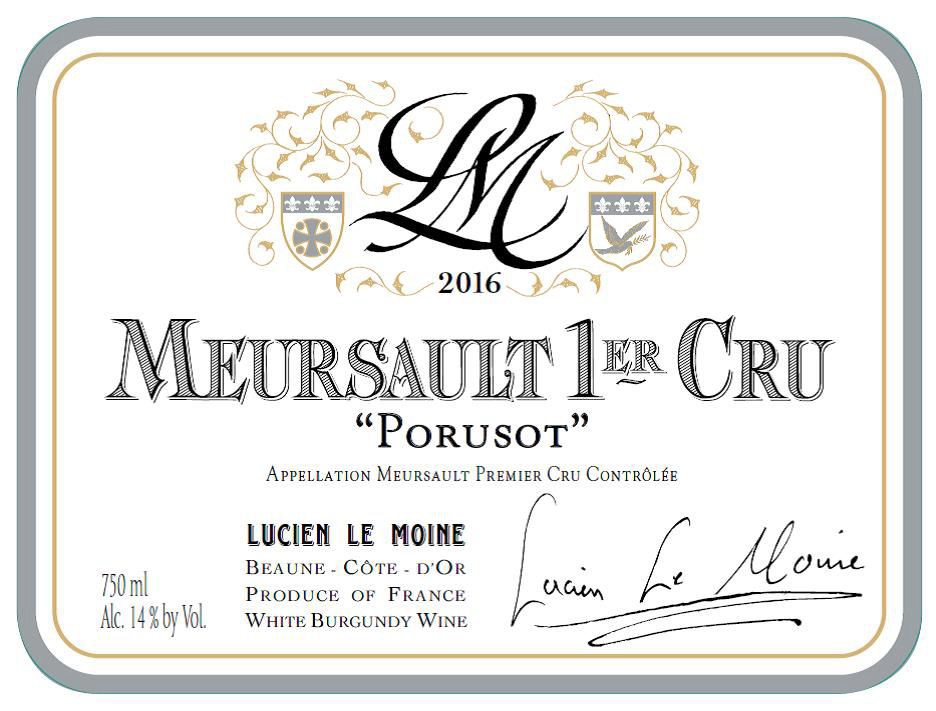
Lucien Le Moine
Meursault 1er Cru “Porusot”
Meursault 1er Cru “Porusot”
Mounir likes to call Meursault Porusot the ambassador of Meursault – it takes from everything around it, Gouttes d’Or, Genevrieres, Charmes, and other vineyards, and shows a little bit of all their characters. It is a wine that doesn’t rest, it keeps changing all the time. Sweet yet flinty, as well as phenolic, it is an intellectual’s wine. Mounir was delighted to bottle Porusot for the first time in 2009.

Lucien Le Moine
Nuits-St-Georges 1er Cru “Les Terres Blanches”
Nuits-St-Georges 1er Cru “Les Terres Blanches”
Les Terres Blanches is a 2.4 acre vineyard in the steepest area of Nuits-St.-Georges, and not far from the top Nuits-St.-Georges vineyards of Les Vaucrains and Les Saint-Georges. There are few producers in this small vineyard, and this very rare Nuits-St.-George white proves intriguing for its Nuits-St.-Georges character in spite of its variety and color.